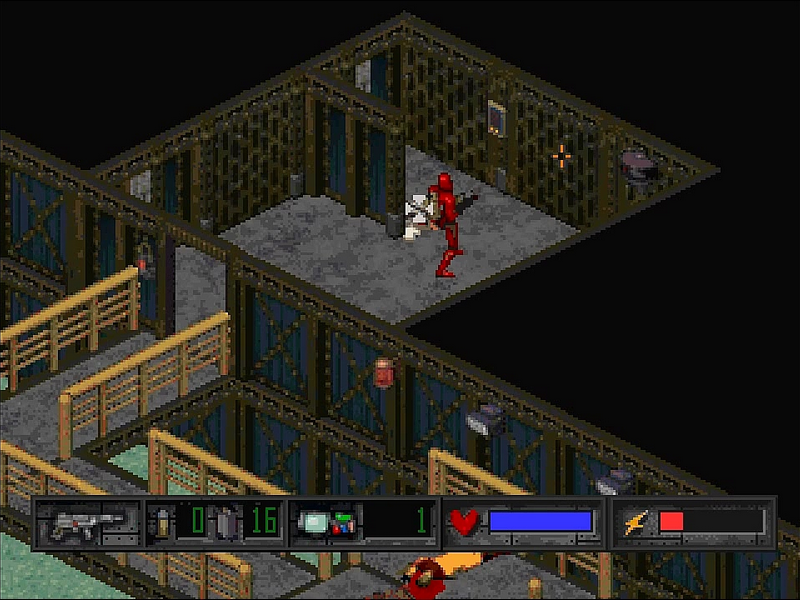

No Regret in particular was somewhat notorious for the number of ways humans could die-which included being shot, set on fire, frozen (and then, if you wanted, shattered), blown apart, melted, reduced to a puddle of non-differentiated grey-green goo, and having the flesh burned off one's skeleton. While the graphics aren't high resolution enough for it to be truly horrifying, the Silencer's more exotic weapons were delightfully gruesome when used against humans.

The Silencer has a vast array of weapons he picks up (or, in the first game, buys from Weasel, an arms dealer sympathetic to the Resistance), from assault rifles, shotguns and grenade launchers to lasers and UV projectors to, in the sequel, inventively vicious weapons like the liquefier and the crystallizer. These graphics still hold up when their age is taken into account. The game featured pre-rendered sprites instead of 3D accelerated polygons generated on the fly. Follow-up games were never produced, though depending on which source you talk to anywhere from one to four more were planned.īoth Crusader games used a modified version of the engine developed for Origin's own Ultima VIII, providing an isometric 3rd-person view on the Player Character not unlike that of Diablo. With the Silencer's help the Resistance takes over the Di-Cor mines, kills a major WEC executive and puts a stranglehold on the WEC's supply of Di-Cor within a week, threatening their control of Earth. There the player learns how critical the moon is, as Di-Correllium (or Di-Cor), a radioactive mineral with half of all known deposits found on the Moon, is responsible for most of the Earth's power supply. They of course find the Silencer, adrift in his lifepod and presumably getting the shakes having not killed someone in two whole days, who proceeds to come capture the freighter, blow it up from the inside out, escape to WEC's lunar base, and break out of his dejected funk. No Regret opens 48 hours later when a supply freighter heading for the moon is diverted to search for survivors of the Vigilance platform's destruction.

The WEC is getting close to tightening their grip further by completing the orbital bombardment platform Vigilance, which would allow them to bombard any point on Earth into rubble on a moment's notice through centralized control of nuclear-armed satellites and would itself remain safe by being a very small target well out of reach of conventional attack. The rest of his team is killed, so the Silencer betrays them in turn, joining up with the Global Resistance, who are trying to remove the WEC from their position of system-wide dominance. At the beginning of No Remorse the Silencer's team is betrayed by the WEC after refusing an order to kill unarmed civilians, identified by their commander as rebels. Made of roughly equal parts Syndicate, 1984, RoboCop, and Star Wars, the story is as follows: In the year 2196, the WEC is a global economic hegemony, ruling the Earth and other colonies in the solar system with an iron fist. Developed by Loose Cannon Productions and published by Origin Systems as Crusader: No Remorse (1995) and Crusader: No Regret (1996), they told the story of a Silencer, one of the World Economic Consortium's ( WEC)'s most elite soldiers.
PLAYSTATION CRUSADER NO REMORSE SERIES
The Crusader series was an early entry into the Isometric Shooter genre.


 0 kommentar(er)
0 kommentar(er)
